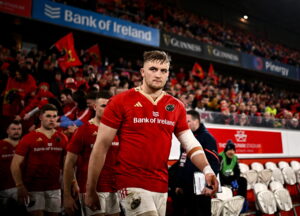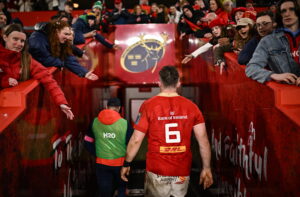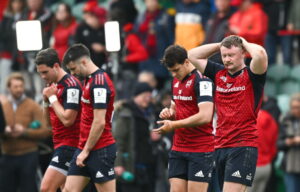Forget about forward formations and stuff like that for a moment. Break it down as simply as you can.
Ultimately, it’s about aligning yourself in a lateral structure that best takes advantage of your forwards’ skill set and physical strengths to manipulate the opposition defence so you can score more points than them and win the game. Simple.
Do you have a lot of heavy runners? There’s a shape for that. Do you have a lot of pacey backrows? There’s a shape for that too. Ultimately, your shape should be a reflection of what your strengths are.
That’s the trick of team building in a lot of ways – finding out who your team is and finding an appropriate shape for them to win. Of course, if they aren’t up to it you’ll have to find ways to change them into something that is up to it as quickly as possible.
Once you’ve identified your strengths, you need to find a shape or structure for them to play in phase for phase. Lineout, scrum, maul and other set-piece derivatives are a vital part of the game.
But most of the game is played in Settled Phase Play these days and if you don’t have a structure to play off in those moments you won’t have much of a chance of winning.
But to hit different parts of your structure, you need to communicate. A winning team is a loud, communicative one that broadcasts clear, easy to understand calls to every member of the team during phase play. With proper communication, you can make best use of your attacking shape.
Before we talk about shape, we need to know what we’re putting that shape on. I like to break down the field into six vertical, colour-coded zones as if I was looking at the goalposts.
This is the picture your players will be looking at on the field so I like to make sure that any graphics that my players get reflects this. Here are my six zones.

Each zone is context-dependent on the ruck because the ruck is a fixed point from where we know the opposition will usually cluster. This is where the colours come into play.
The RED ZONE is where we expect the most amount of opposition defenders, the YELLOW ZONE is where we expect the edge defence to be and the GREEN ZONE is wide space that we expect to be able to run into.
If my winger wants to communicate to my #10 that there is a potential attacking overload situation in R1, for example, then the call will be Liam Green.
Liam (name beginning with ‘L’) is for Left and Green is for the wide channel. That’s the code system I tend to use when I’ve got a clean slate to work with. A call to hit narrow off #9, for example, might be Rob Red.
When the context changes, so does our colour code. Say we spread the ball over to L1 as described above, what does our picture look like on the next ruck?

Our code has changed because of the ruck position. Now we can start talking about shape. Let’s use the 1-3-2-2 that Ireland have started to use as an example.
In this scenario, your pod of three sets the layout for everything else. It’s vital that three forwards – if that’s your chosen shape that you want running off #9 – get in position as soon as possible.

The forwards outside will slot into your pre-arranged structure if the numbers are there for it; in this instance, it’s a 3-2-2.
You might have a guideline that if you’re down two forwards for whatever reason then you’d slot into a 3-3-0, but if you commit to a shape, you want to try and get your players used to playing in it.
If our creative players realise that space is available in a specific zone (let’s say R3) then we can move the ball there with a call from #10 to get the ball back off the forward screen (I use “option” for screen passes) and then hit one of my two YELLOW ZONE forwards, who will both be animating for the ball regardless.
When the ball is in motion, we have to trust individuals to make simple calls for the ball if they see space and, when we’re really advanced, calling for offloads that our forwards are looking to give Yellow and Green Zones.
Green Zone Work: Once we get the ball into the green, you can start to work on your inter-unit communication and execution.

If we add in our other options here – strike running #15 and our winger – you can see how having a wide two pod of forwards is so desirable.

We’ve got multiple options to work with here, as you would look for in a game. 1-3-2-2 gives you this kind of overload option if your Yellow Zone forwards have the versatility to hit up or pull the ball back with enough accuracy.
If you’ve got calls for switches, or loops, you can use them here and drill them in that 15m channel with two or three defenders. I like to use a “two stick and two drift” for my defensive looks in these drills.
Essentially, you have got a winger and a recessed fullback in the backfield at the start of the drill with two edge defenders drifting in from the side. Your attacking players have to work out how to make the line break as they come around the corner.
If you layout a structure like this you can build a series of code calls that give your team the freedom to use their structure as they see fit.









